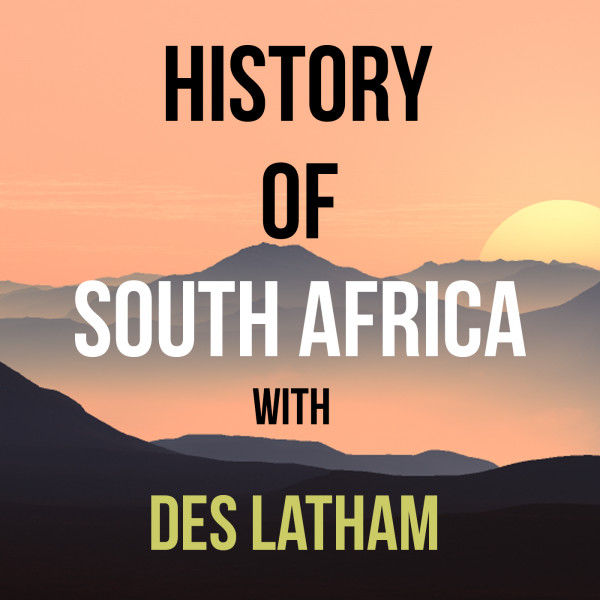
Episode 219 - The Snarled Chronicle of John Orr, Wodehouse Blues and Mercantile Matters
Loading player...
This is episode 219 — a new Governor has sailed into Table Bay.
Sir Philip Edmond Wodehouse, born in 1811, eldest child of Edmond Wodehouse who married his first cousin Lucy, daughter of Philip Wodehouse, uncle Philip to Sir Philip Edmond.
How very Victorian. Queen Victoria herself, who married her first cousin Prince Albert—did allow and even encourage cousin marriage, particularly among royalty and the upper classes to consolidate power, property, and lineage.
But it also increased the risk of birth defects by 2 percent, and if both parents carry a recessive gene mutation, their child has a 25 percent chance of expressing the disorder.
Scientists have a well-worn phrase for this — its called inbreeding.
Wodehouse junior entered the Ceylon Civil Service in 1828, and was installed as superintendent of British Honduras between 1851 to 1854. From there he sailed to British Guiana where he served as Governor between 1854 to 1861 — before heading to the Cape in 1862.
It’s illuminating to touch on Sir Philip Wodehouse’s disastrous time in British Guiana. Two years after he took office in the South American country, the Angel Gabriel riots broke out.
His implacable opponent was John Sayers Orr, whose nom de guerre was the Angel Gabriel, was half Scottish, half African. Edinburgh’s Caledonian Newspaper of the time reported that his mother Mary Ann Orr was a respectable coloured woman and married to a respectable Scot — John Orr senior.
Young John Sayer Orr was rabidly anti-papal, hated the Pope and had an anti-Catholic obsession. He took to the Guianese streets with bullhorn in hand, whereupon the distant Glasgow Herald noted he spoke “rampant anti-papist froth and lies..”
Between 1850 and 1851 he popped up in Boston, then New York, Bath in Maine, and Manchester in New Hampshire. In 1854 he was hustled off by police in Boston. Apart from the usual racial insults levelled at him, the Boston police report says he had more impudence than brains ..
“…who with a three cornered hat and a cockade on his head, and old brass horn .. took advantage of the political excitement .. travelled around the city …tooting his horn … collecting crowds in the streets, delivering what he called his political lectures and passing around the hat for contributions…”
Sounds like a modern political influencer, the bullhorn, the disinformation, the extreme rhetoric, not to mention his hat which is literally crowd sourcing.
He was arrested at least 20 times for what was called his international harangues tour — where he’d shout confusing messages like
“Scorn be those who rob us of our rights — purgatory for popery and the Pope — Freedom to man be he black or white — Rule Britannia…!!”
Bizarrely, the resonances to today’s crazy politics continued, Orr was associated with the fantastically named Know Nothing Party in America. Wait to hear about this bunch, you’ll recognise bits of modern USA.
Members of the movement were required to say "I know nothing" whenever they were asked about its specifics by outsiders, and that providing the group with its colloquial name.
Before you wonder aloud what relevance all this has, let me quickly point out that the so-called Know Nothing Party had 43 representatives in Congress at the height of its power in the late 1850s.
In 1855 this strange 19th Century character pitched up in British Guiana, and Sir Philip Wodehouse had his work cut out. Soon Orr was up to his old tricks, walking about with his bull horn, carrying a flag and a British imperial badge, followed by a group of …. Well .. followers. They were not repeating they Knew Nothing, but attacking the British establishment.
We'll also hear about the Angel Gabriel riots. By 1862 Wodehouse who survived a public stoning in Guiana, had arrived in the Cape as Governor. Here he was to face the implacable enemies - the Westerners and the Easterners. Two parts of the Cape that did not get along.
Sir Philip Edmond Wodehouse, born in 1811, eldest child of Edmond Wodehouse who married his first cousin Lucy, daughter of Philip Wodehouse, uncle Philip to Sir Philip Edmond.
How very Victorian. Queen Victoria herself, who married her first cousin Prince Albert—did allow and even encourage cousin marriage, particularly among royalty and the upper classes to consolidate power, property, and lineage.
But it also increased the risk of birth defects by 2 percent, and if both parents carry a recessive gene mutation, their child has a 25 percent chance of expressing the disorder.
Scientists have a well-worn phrase for this — its called inbreeding.
Wodehouse junior entered the Ceylon Civil Service in 1828, and was installed as superintendent of British Honduras between 1851 to 1854. From there he sailed to British Guiana where he served as Governor between 1854 to 1861 — before heading to the Cape in 1862.
It’s illuminating to touch on Sir Philip Wodehouse’s disastrous time in British Guiana. Two years after he took office in the South American country, the Angel Gabriel riots broke out.
His implacable opponent was John Sayers Orr, whose nom de guerre was the Angel Gabriel, was half Scottish, half African. Edinburgh’s Caledonian Newspaper of the time reported that his mother Mary Ann Orr was a respectable coloured woman and married to a respectable Scot — John Orr senior.
Young John Sayer Orr was rabidly anti-papal, hated the Pope and had an anti-Catholic obsession. He took to the Guianese streets with bullhorn in hand, whereupon the distant Glasgow Herald noted he spoke “rampant anti-papist froth and lies..”
Between 1850 and 1851 he popped up in Boston, then New York, Bath in Maine, and Manchester in New Hampshire. In 1854 he was hustled off by police in Boston. Apart from the usual racial insults levelled at him, the Boston police report says he had more impudence than brains ..
“…who with a three cornered hat and a cockade on his head, and old brass horn .. took advantage of the political excitement .. travelled around the city …tooting his horn … collecting crowds in the streets, delivering what he called his political lectures and passing around the hat for contributions…”
Sounds like a modern political influencer, the bullhorn, the disinformation, the extreme rhetoric, not to mention his hat which is literally crowd sourcing.
He was arrested at least 20 times for what was called his international harangues tour — where he’d shout confusing messages like
“Scorn be those who rob us of our rights — purgatory for popery and the Pope — Freedom to man be he black or white — Rule Britannia…!!”
Bizarrely, the resonances to today’s crazy politics continued, Orr was associated with the fantastically named Know Nothing Party in America. Wait to hear about this bunch, you’ll recognise bits of modern USA.
Members of the movement were required to say "I know nothing" whenever they were asked about its specifics by outsiders, and that providing the group with its colloquial name.
Before you wonder aloud what relevance all this has, let me quickly point out that the so-called Know Nothing Party had 43 representatives in Congress at the height of its power in the late 1850s.
In 1855 this strange 19th Century character pitched up in British Guiana, and Sir Philip Wodehouse had his work cut out. Soon Orr was up to his old tricks, walking about with his bull horn, carrying a flag and a British imperial badge, followed by a group of …. Well .. followers. They were not repeating they Knew Nothing, but attacking the British establishment.
We'll also hear about the Angel Gabriel riots. By 1862 Wodehouse who survived a public stoning in Guiana, had arrived in the Cape as Governor. Here he was to face the implacable enemies - the Westerners and the Easterners. Two parts of the Cape that did not get along.
